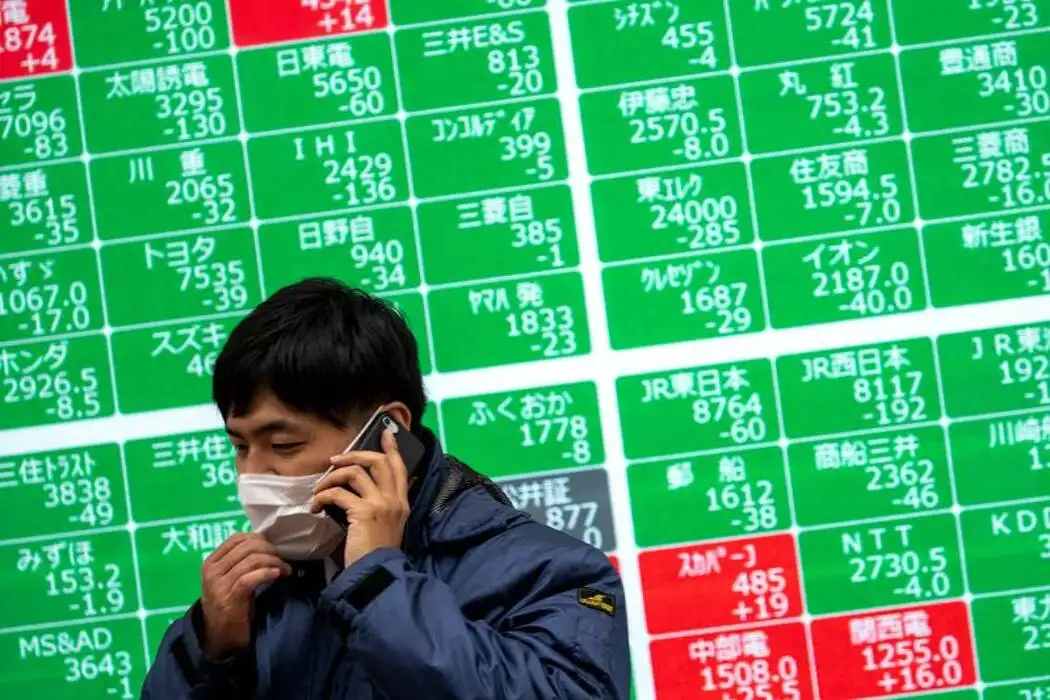简体中文
繁體中文
English
Pусский
日本語
ภาษาไทย
Tiếng Việt
Bahasa Indonesia
Español
हिन्दी
Filippiiniläinen
Français
Deutsch
Português
Türkçe
한국어
العربية
Attacks wiped out half of Saudi Arabia's oil production — and it could lead to higher gas prices
Abstract:A drone strike that knocked out half of Saudi Arabia's oil production could lead to higher oil prices globally, according to analysts.
A strike that knocked out half of Saudi Arabia's oil production could lead to higher oil prices globally, according to analysts.
The production shutdown amounts to about 5% of the world's daily production of crude oil, or roughly 5 million barrels.
The Saudi index fell 2.3% at the opening on Sunday before recovering, Reuters reported.
Visit the Markets Insider homepage for more stories.
On Saturday, a strike on two major Saudi Arabian oil refineries knocked out about half of the country's oil production.
The production shutdown amounts to about 5% of the world's daily production of crude oil, or roughly 5 million barrels. The attack came as state-owned oil giant Saudi Aramco has been plotting a massive initial public offering. Yemen's Houthi rebel group claimed responsibility for the attack.
The Saudi index fell 2.3% at the opening on Sunday before recovering, Reuters reported. The move erased any stock gains on the index for the year, Bloomberg reported.
Read more: The world's largest oil plant in Saudi Arabia was attacked by 10 explosive drones ahead Aramco's plans for the biggest IPO ever
Reuters reports that other Gulf markets, including Kuwait and Dubai were down 0.4% and 0.5% respectively on Sunday following Saturday's attack.
Beyond the Gulf states, the attack could have a big impact on energy prices around the globe, with some analysts estimating that the price of crude oil could jump $10 when trading opens Sunday evening.
“This is a big deal,” Lipow Oil Associates president Andrew Lipow told CNBC on Saturday. “Fearing the worst, I expect that the market will open up $5 to $10 per barrel on Sunday evening. This is 12 to 25 cents per gallon for gasoline.”
The extent of the higher prices might not have the same effect on the US economy that it has had in the past, in part because of the rise in US oil production, The Wall Street Journal reported Sunday. In the 1970s, sky-high oil prices caused by an embargo imposed by Arab oil producers led to a stock-market crash.
But if it results in higher energy prices, Ryan Kellogg, an economist at the University of Chicago told The Journal, it could be a key part of a global slowdown, which in turn could affect the US.
“To the extent those slowdowns are going to ripple through the trade system, we could see some of those impacts in the U.S. as well,” Kellogg told The Journal.
Disclaimer:
The views in this article only represent the author's personal views, and do not constitute investment advice on this platform. This platform does not guarantee the accuracy, completeness and timeliness of the information in the article, and will not be liable for any loss caused by the use of or reliance on the information in the article.
Read more

GemForex | Crude Oil (WTI)
Crude Oil (WTI) - Rebound in the offing?

Oil inches higher as OPEC meetings continue
A stronger than expected payroll report last Friday pushed equity markets to another all-time high. The U.S. economy added 850,000 new jobs during June when the consensus expected 700,000. Whilst the headline number looks good, there’s plenty to be worried about under the hood, as the new jobs are mostly in those sectors of the economy that have reopened. For instance, the leisure and hospitality sectors added 343,000 new jobs, education around 269,000, and the retail sector 67,000. These add up to around 80% of the total; this is great at first glance but not in the long run since these sectors do not drive the productivity or wage growth required for sustainable expansion. In particular, the U.S. economy is 70% consumer driven, which emphasizes the importance of a healthy and wealthy labor market. With the country still 7 million jobs short of pre-pandemic levels and most of the recovery happening in low-paying and low-productivity sectors, there is still a long way to go before the

Oil Countdown: With 48 Hours To OPEC Meeting, Where Are Prices Headed?
It’s the answer every oil trader is seeking, yet will likely get with only a certain degree of accuracy. With about two days left until the all-important ministerial meeting of OPEC+, few things are more crucial than figuring out where oil will be trading before the world alliance of oil producers lays down its policy decisions for December. Dozens of ideas abound on crude prices over the next 48 hours, with as many theories on why they should be so

Oil and euro slip, markets on edge over COVID-19 curbs in Europe
Asian stocks made a soft start to the week on Monday while oil and the euro were under pressure, as the return of COVID-19 restrictions in Europe and talk about hastened tapering from the U.S. Federal Reserve put investors on guard.
WikiFX Broker
Latest News
BSP Shuts Down Uno Forex Over Serious AML Violations
ACY Securities Expands Global Footprint with South Africa Acquisition
Tokyo Police Arrest 4 for Unregistered FX Trading Scheme
Rupee gains against Euro
Axi Bids AUD 52M to Acquire Low-Cost Broker SelfWealth, Outbidding Competitor Bell Financial
Crypto Influencer's Body Found Months After Kidnapping
US Regulators Tighten Oversight on Bank Anti-Money Laundering Efforts
Doo Group Expands Its Operations with CySEC License
RM900,000 Scammed: The Hidden Dangers of Online Investment Schemes
5 Advantages of Choosing a Regulated Broker
Currency Calculator


